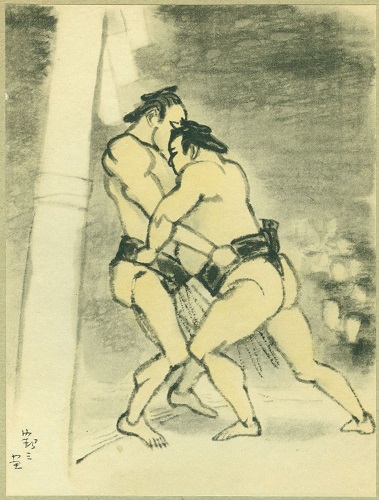
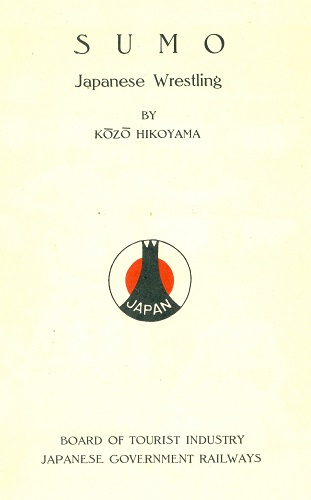
©1940
Techniques illustrations stylistically attributable to Hirazaki Eihō
大相撲 決まり手 鰭崎英朋画 (たぶん?)
Including seven illustrations from:
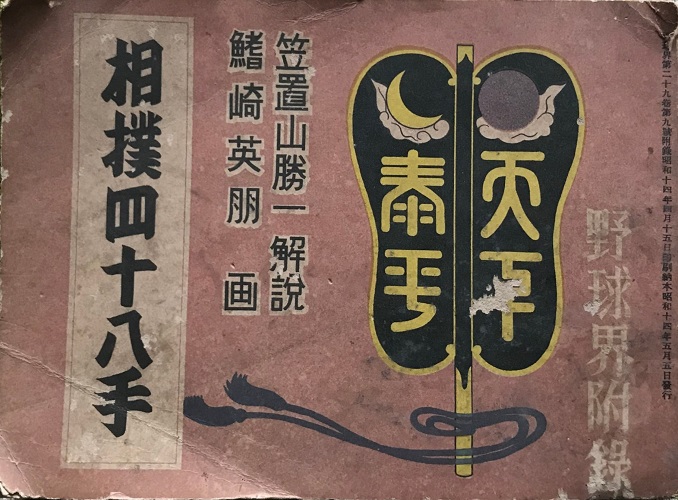
「相撲四十八手」 (Sumou shijūhatte) [Sumo Forty Eight Moves]
鰭崎英朋 画 [Hirazaki Eiho Illustrations]
笠置山勝一 解説 [Kasagiyama Katsuichi commentary]
© 昭和14年/1939年
From Chapter 3. Numbering is from the technique captions. I have Hepburnized the phoenetic Japanese (tu=tsu, si=shi, etc.).
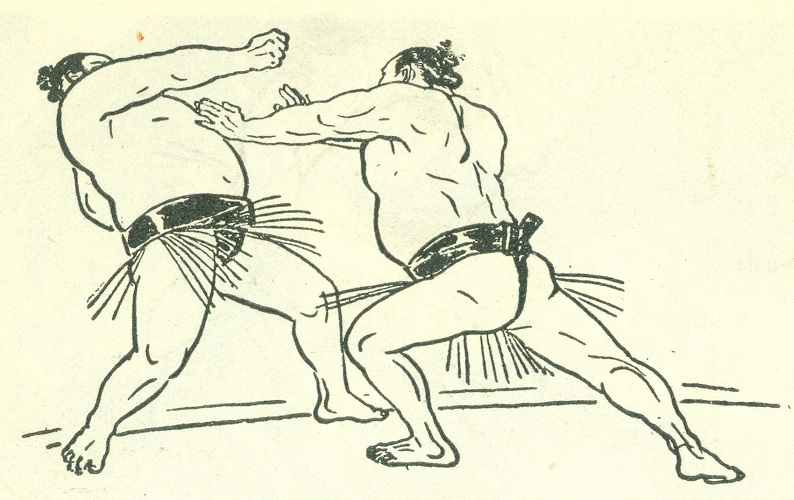
1 Tsukippanashi 付けっ放し When one succeeds in ousting his opponent from the ring by a series of thrusts, it is called tsuki-dashi, or "thrust out". If his thrusts were so powerful that the opponent was "blown out" of the ring, it is called tsukippanashi, or "blown-out".
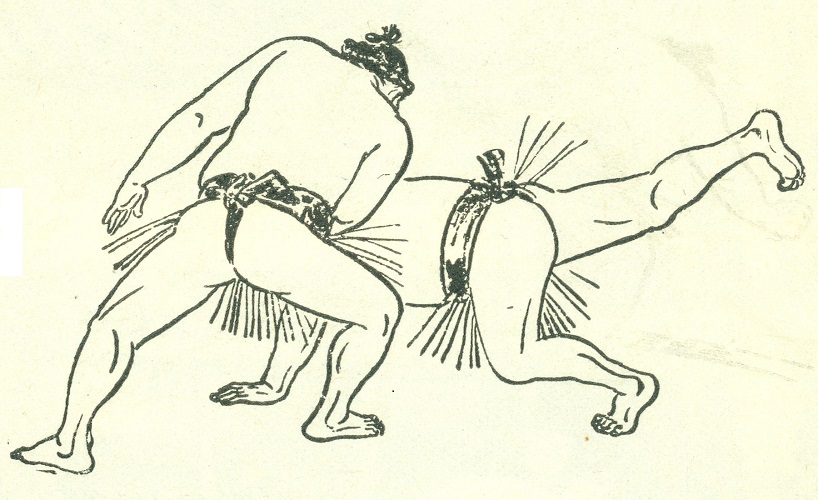
2 Hatakikomi 叩き込み
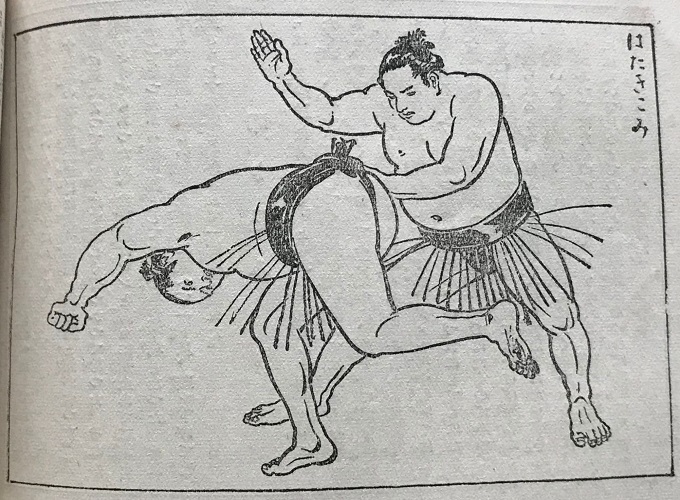
Hatakikomi 叩き込み from [Sumo Forty Eight Moves]
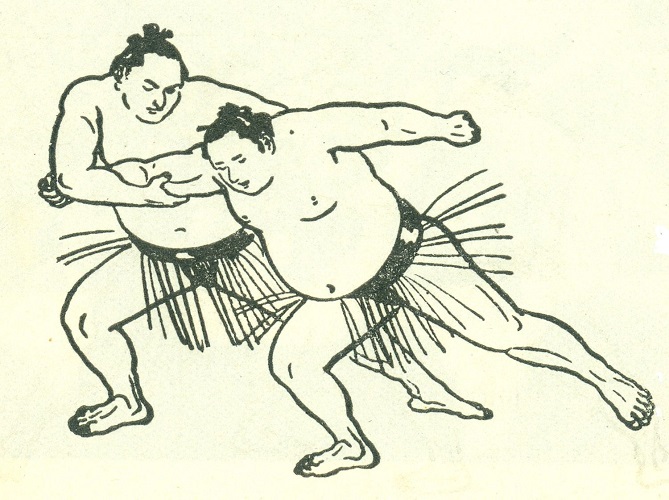
3 Hikkake 引っ掛け
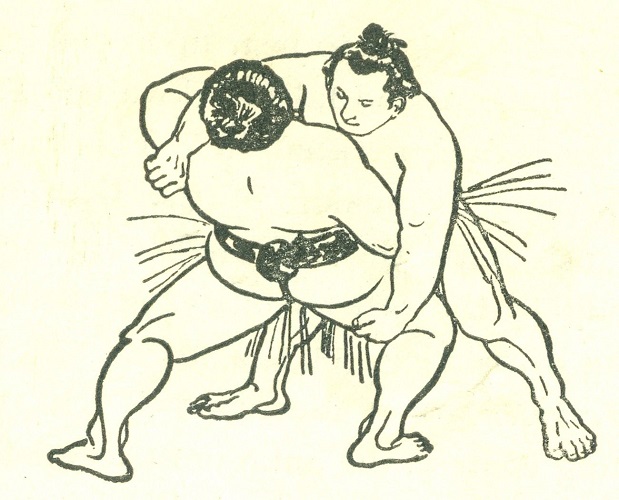
4 Ō-watashi 大渡し This is when, in the midst of battling with thrusts, or pushing at each other, one of the contestants manages to get hold of the opponent's right wrist with his right hand and pulls it in toward himself with all his might at the same time getting hold of his thigh from outside with his left hand. Then, while pulling up the opponent's thigh, he lets go of the opponent's right hand and swiftly throws the arm against the latter's left shoulder and pushes his body. When he has his opponent effectively, he brings his weight to bear upon him until the opponent loses his balance and falls backwards.
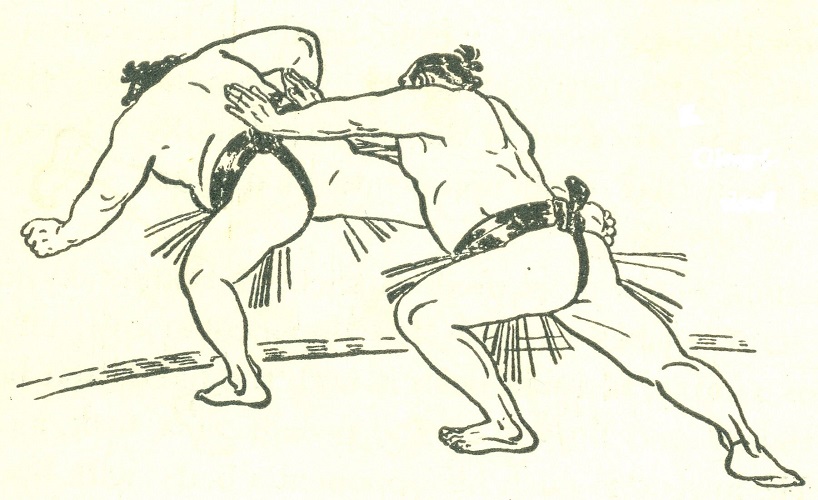
5 Okuridashi 送り出し
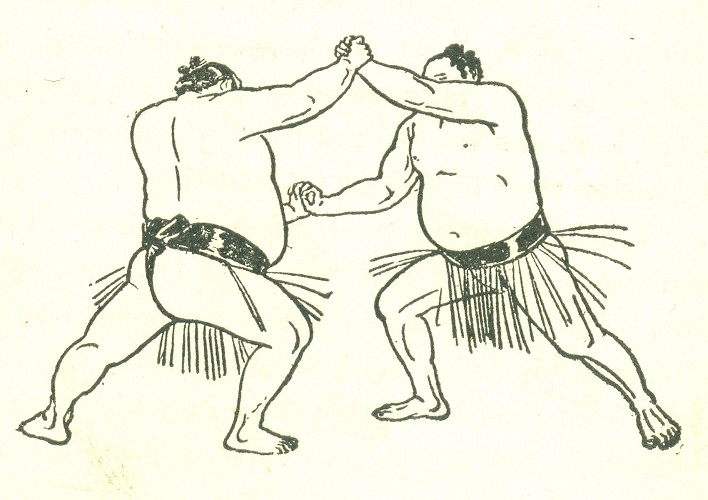
6 Teyotsu [four hands] 手四つ In the midst of a thrusting contest, the antagonists come to a sudden deadlock, one holding the other's hands, and each seeking a chance for the next move. "Four-hands" is the name for this position of the two contestants. It often happens that one pushes the other out of the ring by skillfully releasing his hands from that of his opponent.
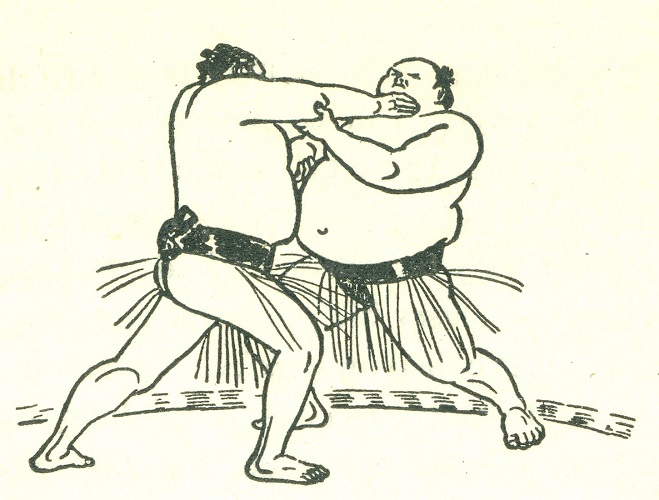
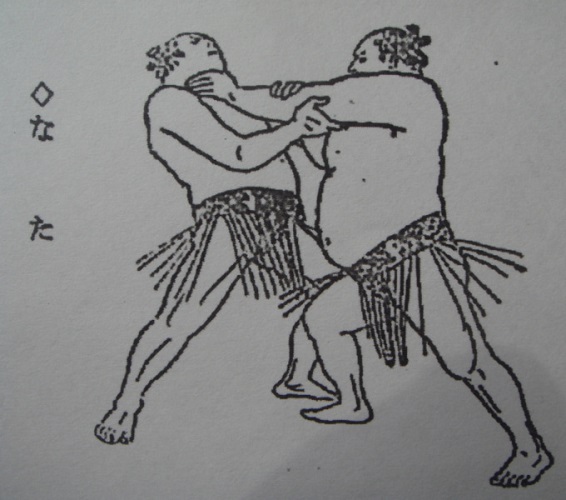
7 Nodowa 喉輪
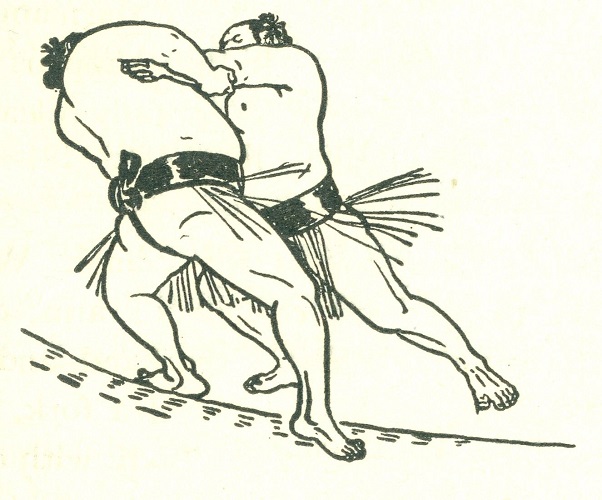
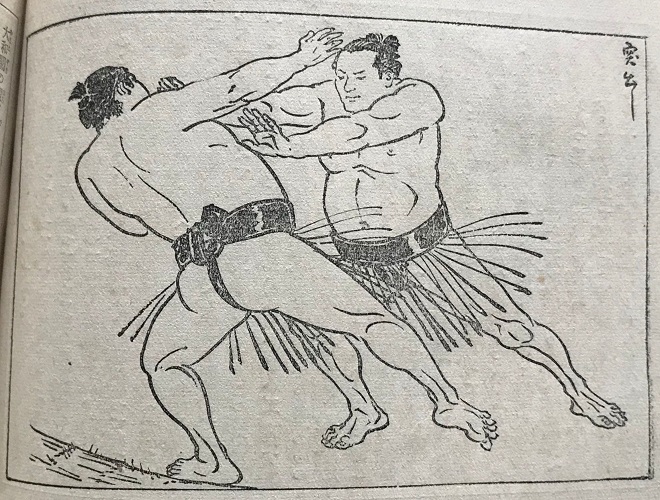
8 Oshidashi 押し出し right from [Sumo Forty Eight Moves]
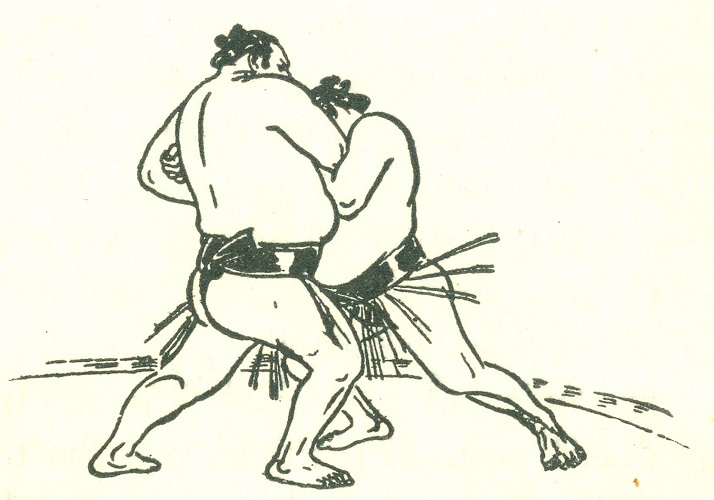
9 Izumigawa 泉川 This trick cannot be practiced to advantage unless one is physically a giant and powerful. It is a method a contestant may adopt in ousting the opponent from the ring by arresting the freedom of the latter's arms, pinioning them against his own body with his own arms. In executing this trick, however, he may see to it that one of his elbows is pressing against the opponent's chest in order to prevent him from making a counter-attack.
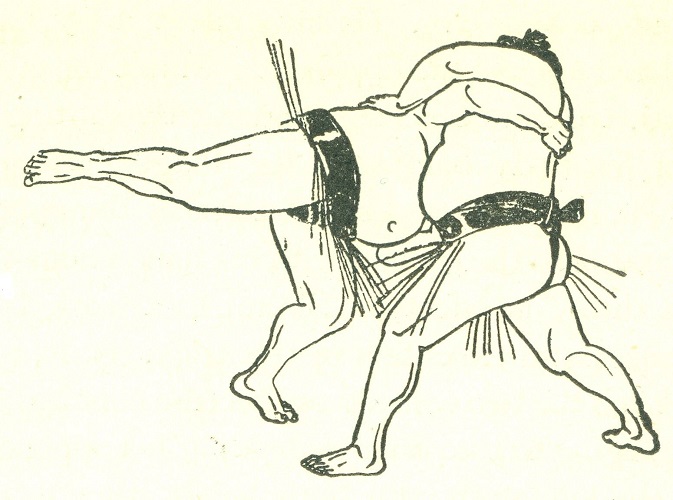
10 Tsukiotoshi 突き落とし
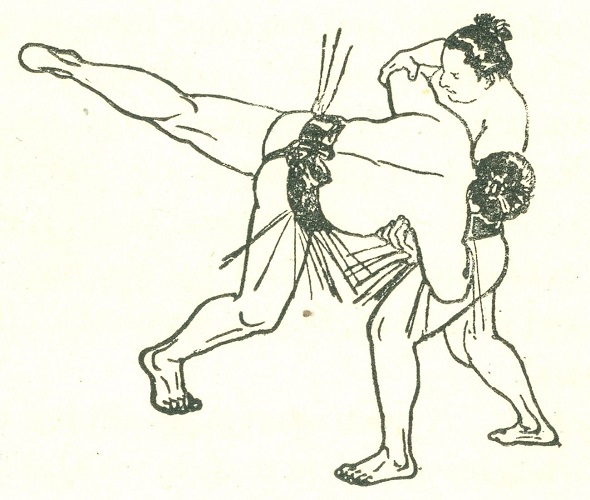
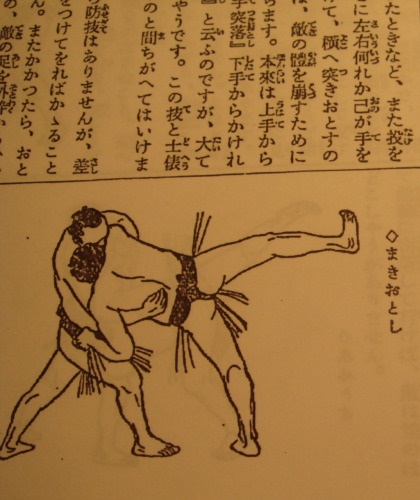
11 Makiotoshi 巻き落とし
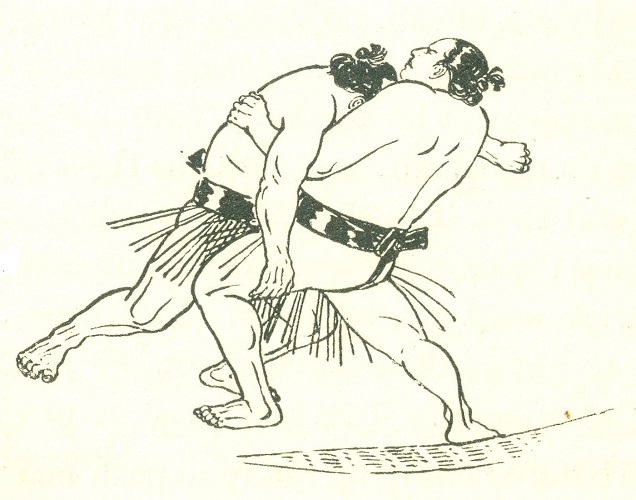
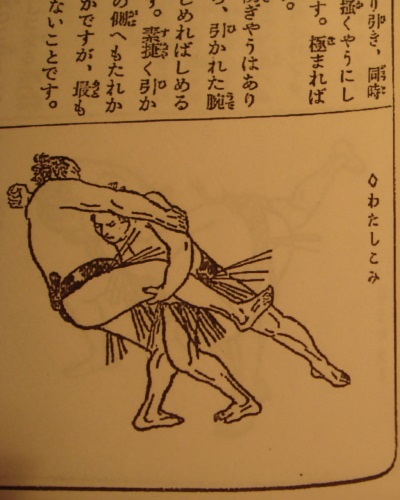
12 Watashikomi 渡し込み
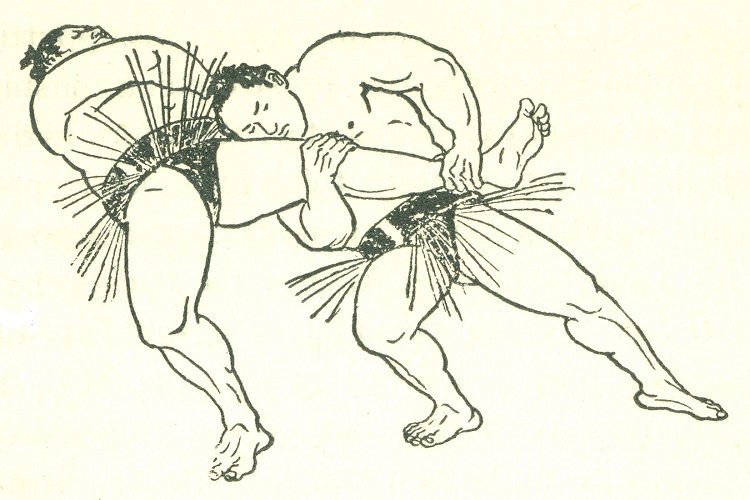
13 Ashitori 足取り
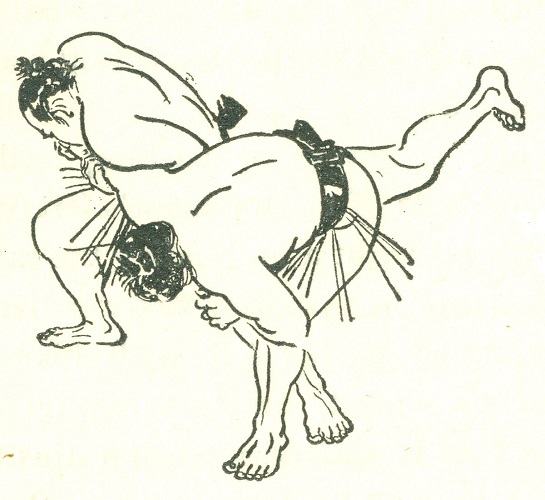
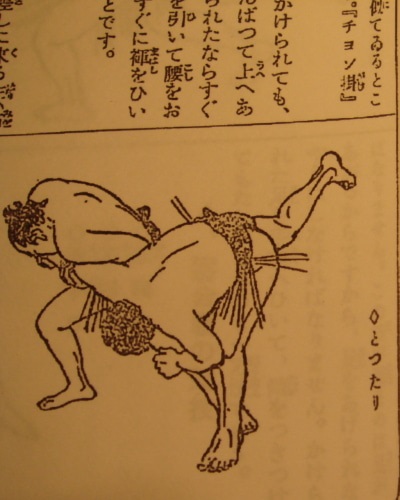
14 Tottari とったり
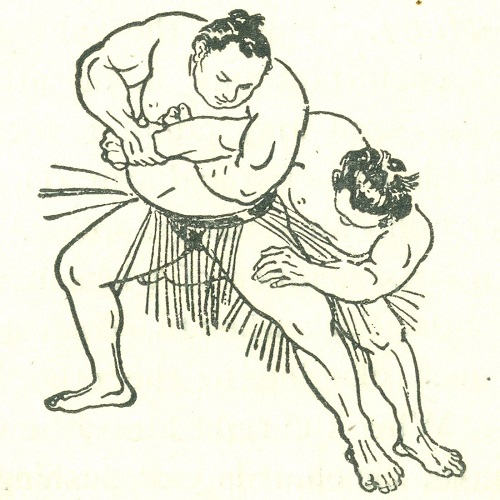
15 Sakatottari 逆とったり
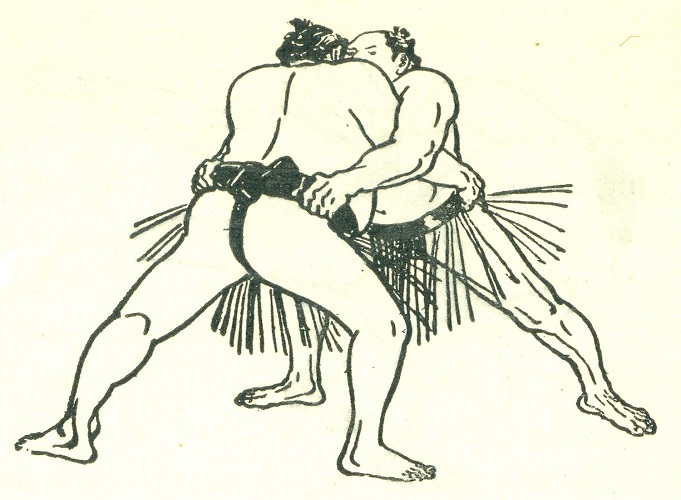
16 Migizashi 右差し
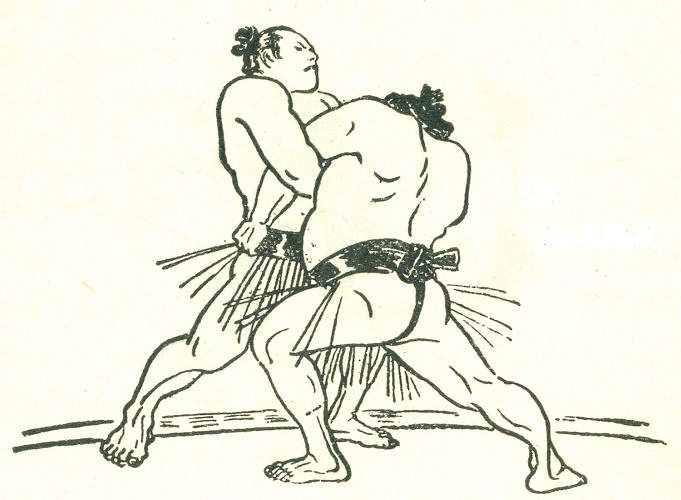
17 Yorikiri 寄り切り
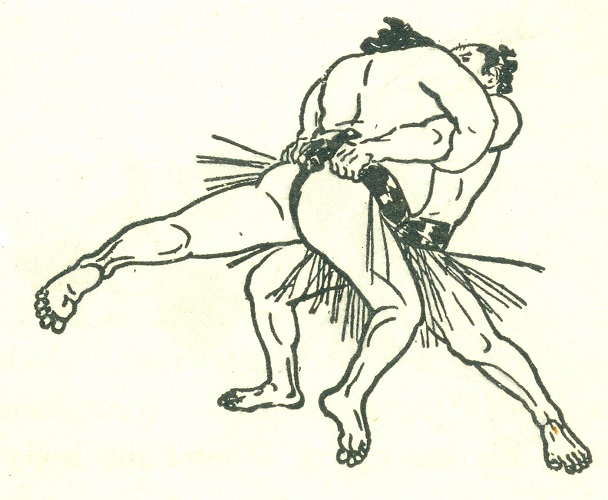
18 Tsuridashi 吊り出し
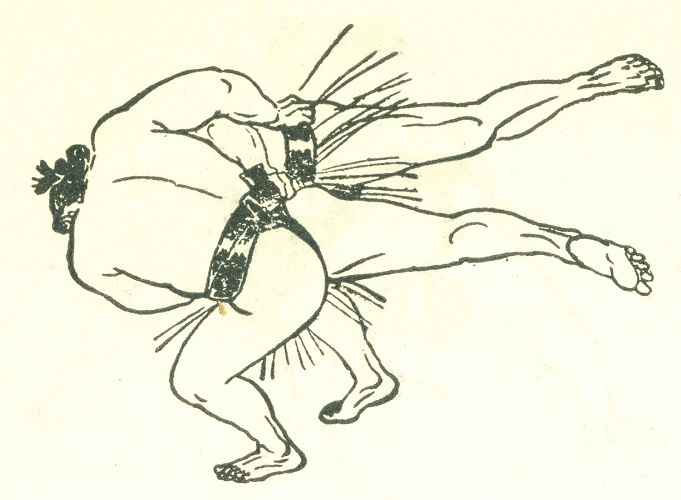
19 Uwatenage 上手投げ
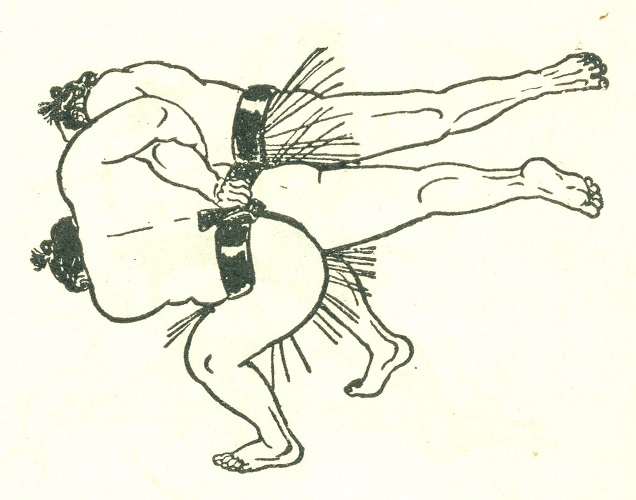
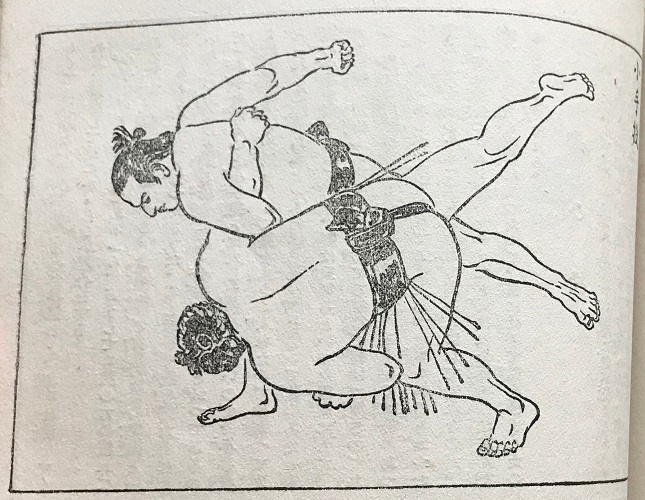
20 Kotenage 小手投げ right from [Sumo Forty Eight Moves]
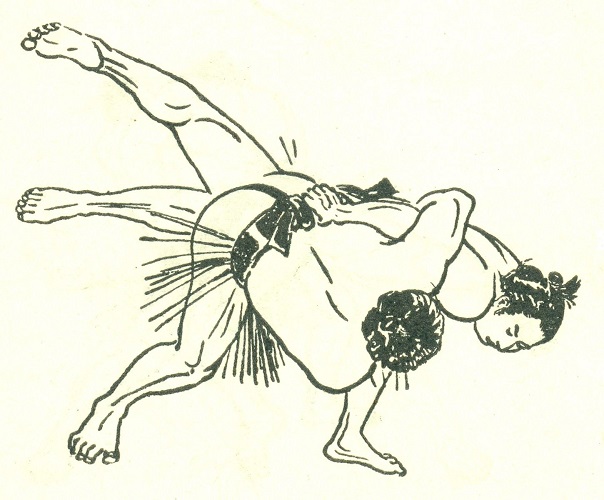
21 Shitatenage 下手投げ
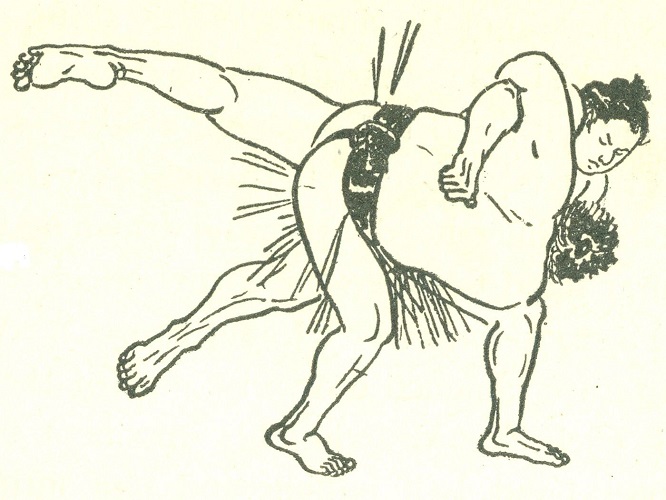
22 Sukuinage 掬い投げ
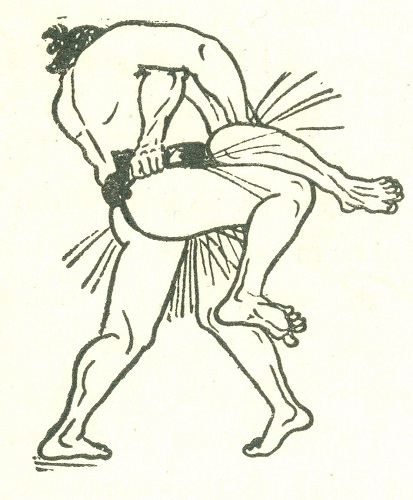
23 Yaguranage 櫓投げ
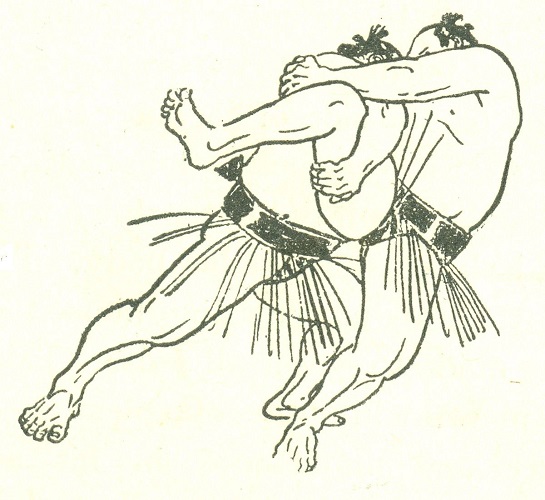
24 Komatasukui 小股掬い
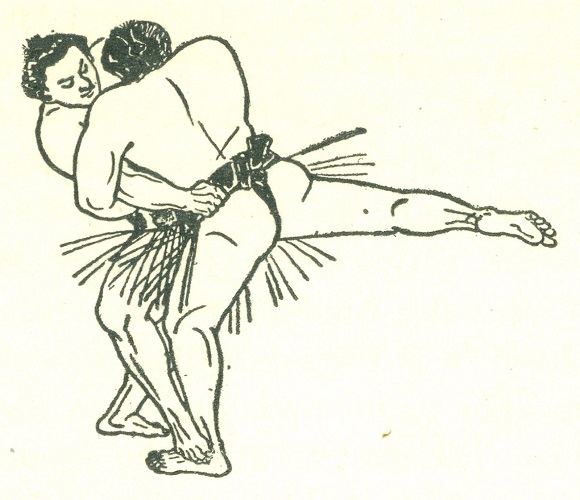
25 Nimaigeri 二枚蹴り
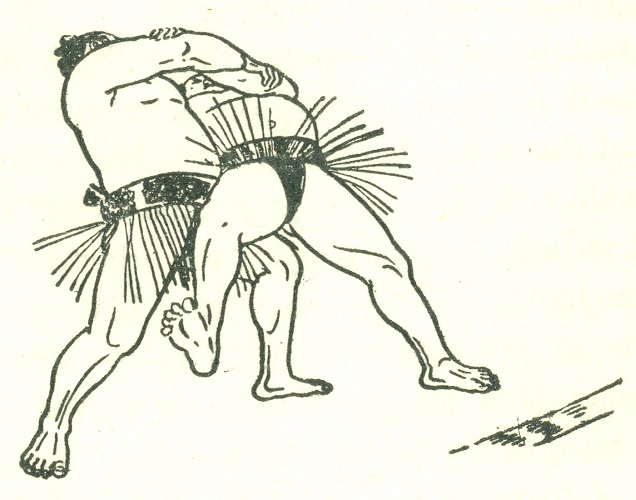
26 Kirikaeshi 切り返し
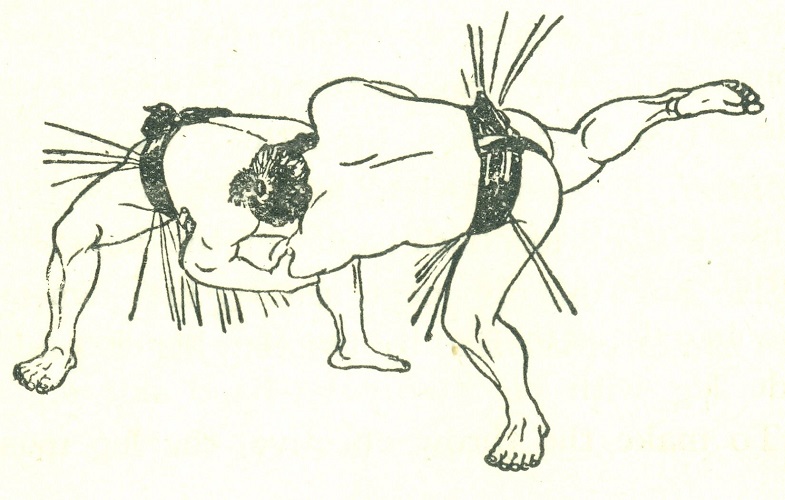
27 Zuhineri [head twist] 頭捻り In executing this throw, a contestant may first push his opponent with his head against the latter's chest while holding onto his inner arm firmly with both hands. The essential point is that he must manage to get his head to the lower point of his opponent's body. When his head is low enough, he is in a position to be able to throw him by pulling his inner arm downward. This trick is usually employed by a smaller wrestler with a powerful hip, neck and arms.
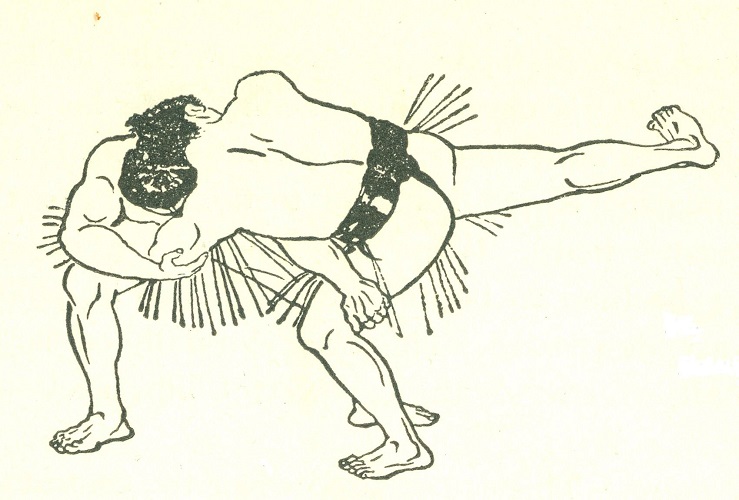
28 Sotomuso 外無双
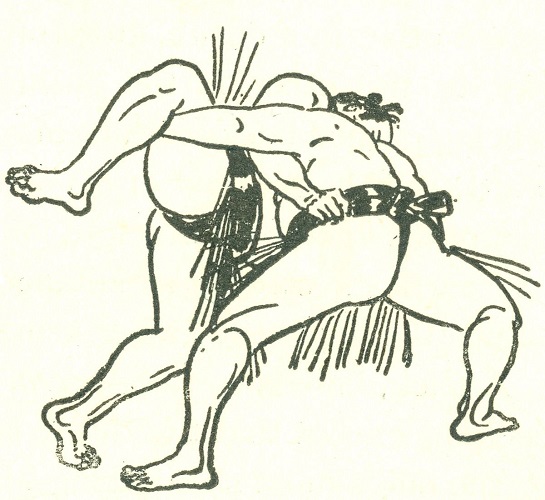
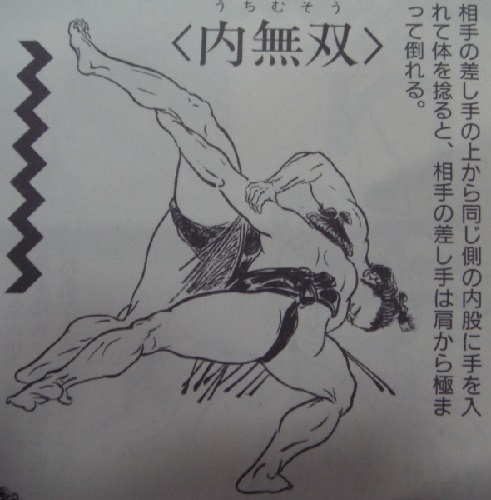
29 Uchimuso 内無双
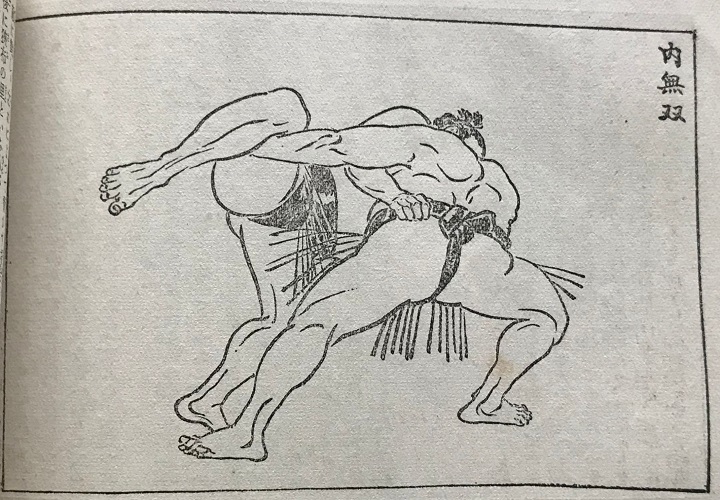
Uchimuso 内無双 from [Sumo Forty Eight Moves]
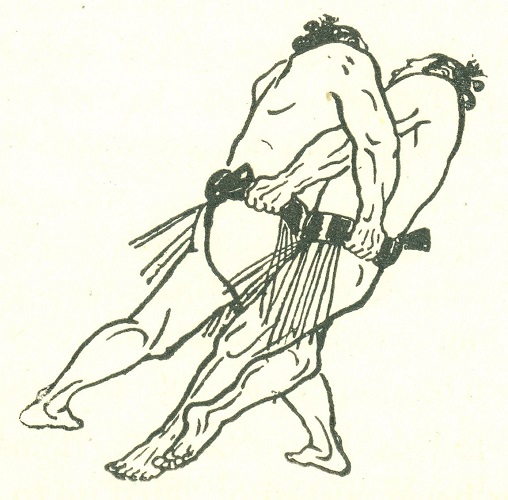
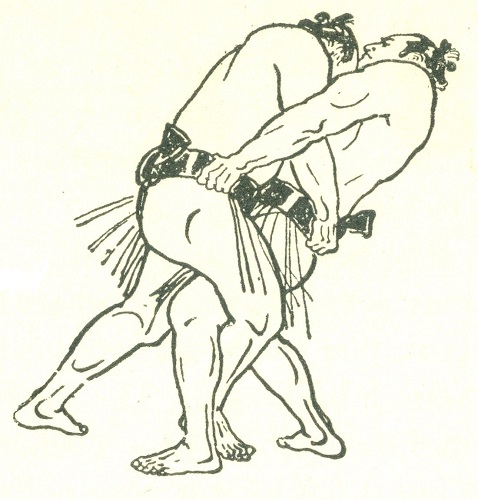
30 Uchigake/31 Sotogake 内掛け
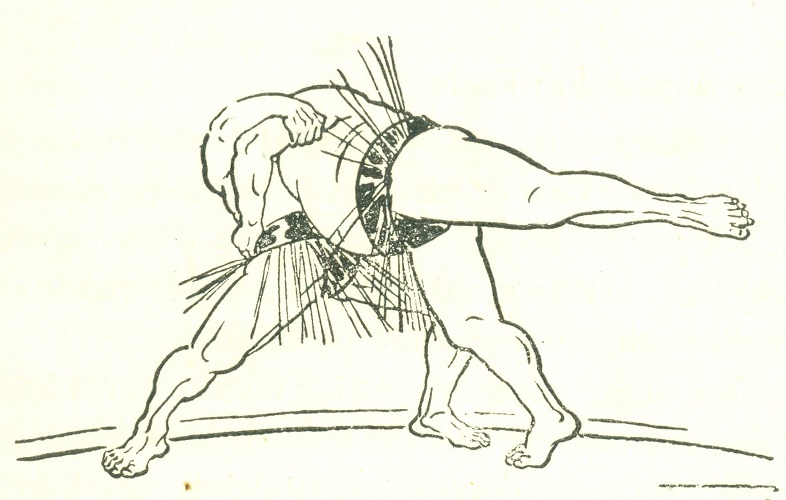
32 Utchari 外掛け
Technique description with no illustration:
Sori [bending backward] 反り By ducking, a contestant may get hold of the lower part of his opponent's body and throw him backward over his head by suddenly stretching himself backward. This method was popularly used in former days when the wrestling ring was not yet introduced, but it has almost gone out of fashion.
From [Sumo Forty Eight Moves]
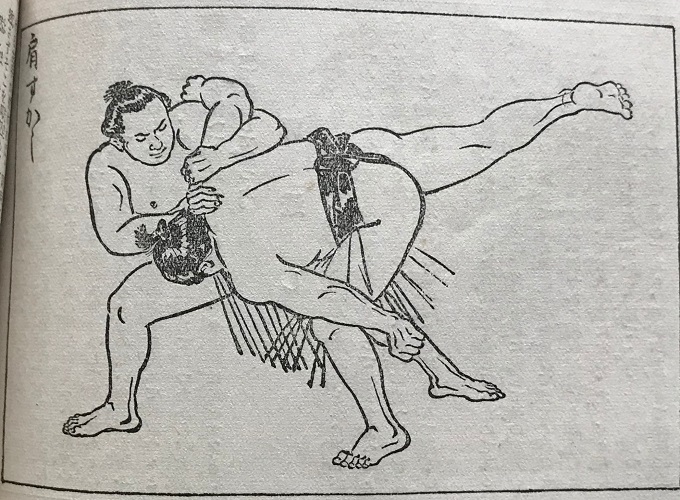
Katasukashi 肩透かし
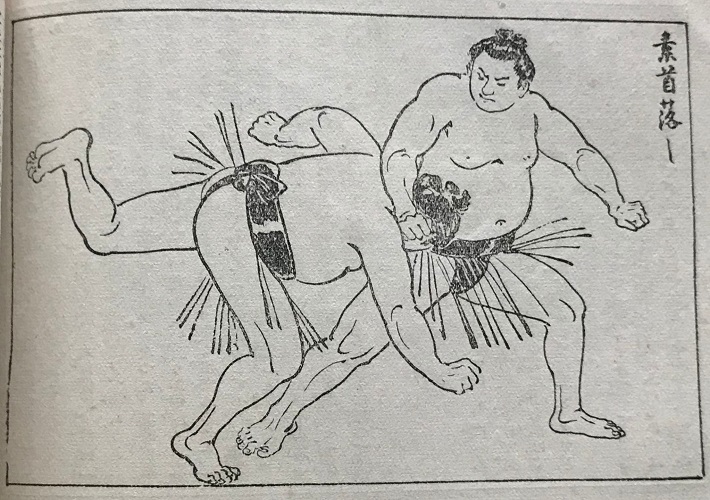
Sokubiotoshi 素首落とし
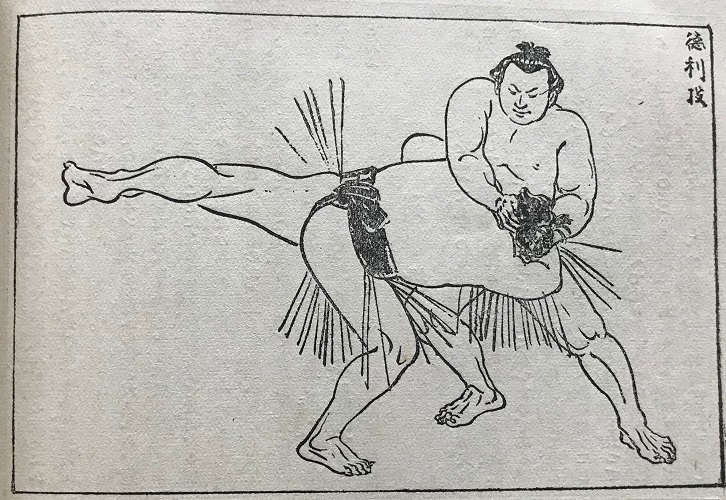
Tokkurinage 徳利投げ
Kimarite coasters (by Yumi, perhaps)
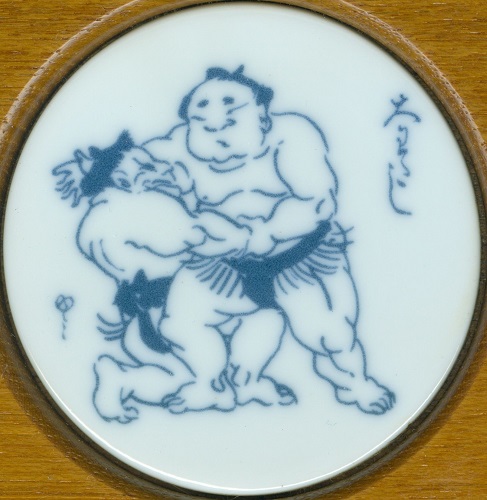
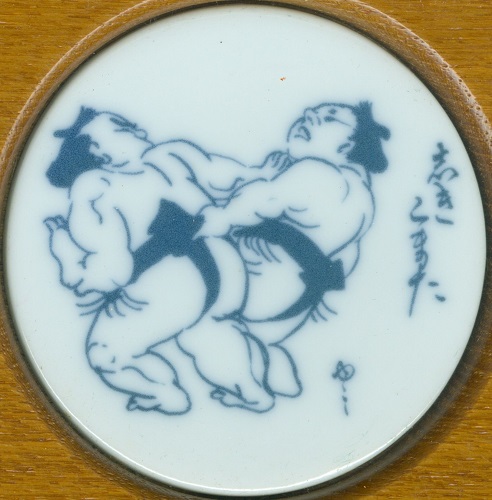
Ōwatashi 大渡し/Shikikomata 鋪小股
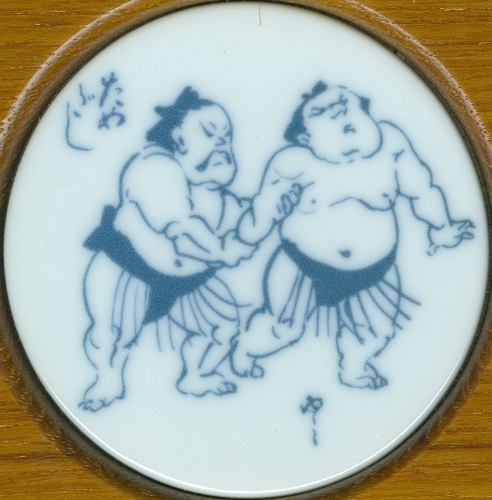
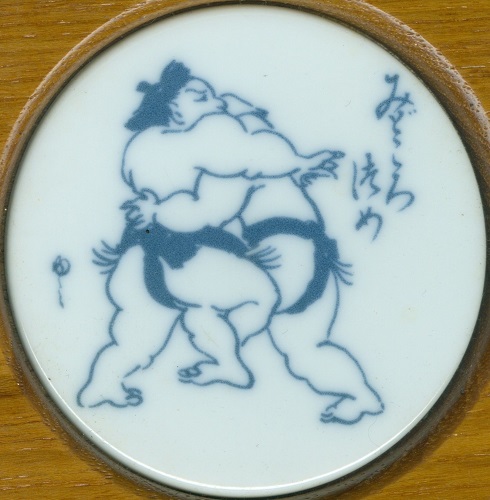
Tamedashi 極め出し/Midokorotsume 三所攻め
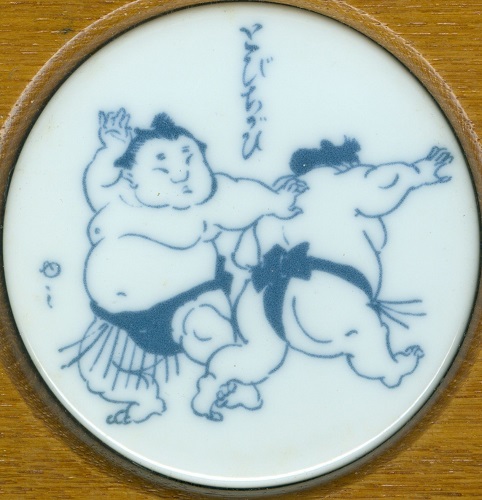
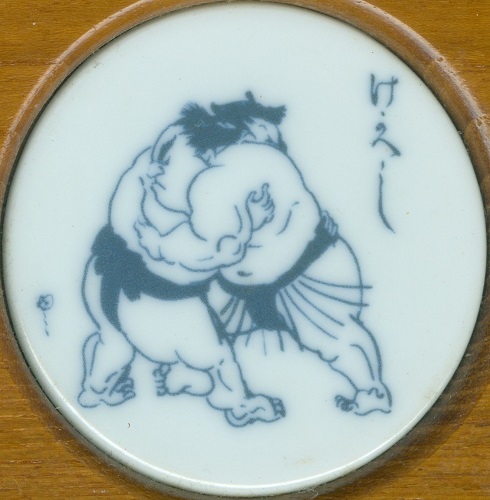
Tobichigai 飛び違い/Kekaeshi けかえし
home